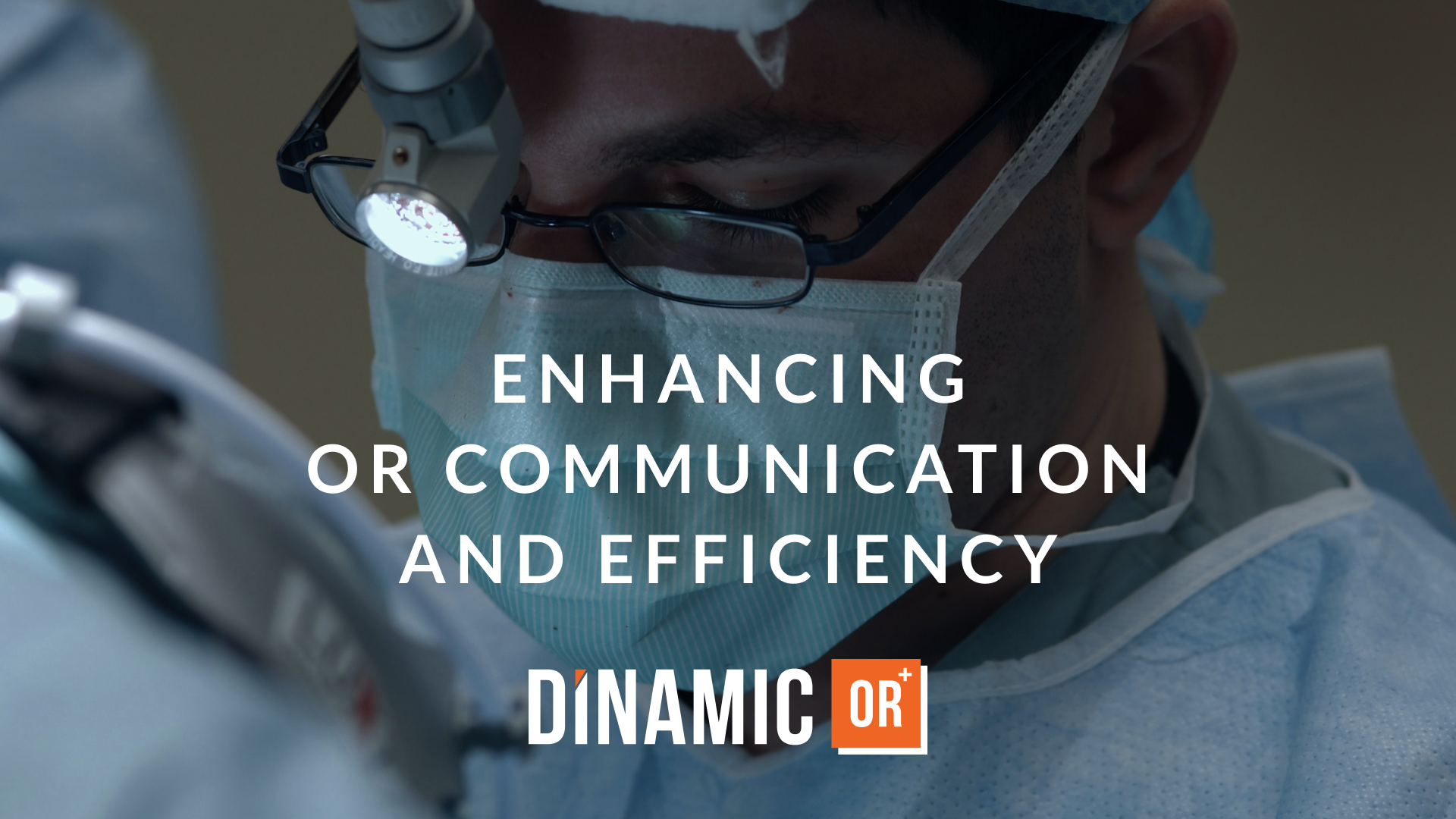

Enhancing OR Communication and Efficiency with DinamicOR
The Association of periOperative Registered Nurses (AORN) recently released updated guidelines aimed at improving team communication in the operating room. These guidelines are crucial for promoting patient safety and ensuring that perioperative teams function effectively. The AORN guidelines emphasize several key strategies, including briefings to establish a shared mental model, regular verbal updates from surgeons to maintain situational awareness, and optimized workspace design to enhance efficiency and safety. Implementing these strategies effectively requires the right tools and technologies, which is where DinamicOR’s suite of solutions comes into play.
Q: How do briefings promote a shared mental model in the OR?
A: Briefings are essential for ensuring that every team member has a clear and consistent understanding of the surgical plan. This shared mental model is crucial for preventing errors and ensuring smooth operations. DinamicOR’s Workflow Management App supports this by allowing existing staff to document and share their knowledge directly within the app. This digital transfer of knowledge ensures that all team members, including new or rotating staff, have access to the same critical information, reducing misunderstandings and aligning everyone on the same page. By accessing these educational resources before entering the OR, the team can prepare more effectively, which reduces stress and fosters a unified approach to the procedure.
Q: How can surgeons facilitate situational awareness through frequent verbal updates?
A: Regular updates from surgeons during a procedure are vital for maintaining situational awareness, allowing the entire team to stay informed about the progress and any changes in the surgical plan. The DinamicOR Workflow Management App enhances this communication by providing real-time visual aids and prompts that keep the team synchronized with the surgeon’s verbal instructions. These prompts are generated based on surgeon-specific preferences that can be documented in the app, ensuring that the team can anticipate the next steps and respond promptly to any changes.
Q: How do redundancies in resources impact OR efficiency, and how can they be managed?
A: The AORN guidelines recommend maintaining redundancies in resources such as staffing, supplies, and equipment to ensure flexibility and safety in the OR. However, managing these redundancies effectively can be challenging. DinamicOR’s solutions address this by digitizing and duplicating critical knowledge through the Workflow Management App. By having procedural knowledge accessible to all team members, not just perioperative educators, the app reduces the dependency on a single point of knowledge and enables all staff to access the necessary information. This digital redundancy yields cost savings by reducing training time and ensuring that staff can quickly adapt to different procedures with confidence.
Q: What role does skills coaching play in the OR, and how can it be effectively implemented?
A: Skills coaching involves providing team members with timely reminders and prompts about upcoming tasks, which helps to ensure that everyone is prepared and reduces the likelihood of errors. The DinamicOR Workflow Management App plays a key role in facilitating this by offering step-by-step guidance and reminders for each stage of the procedure. Staff can also study the procedure ahead of time, ensuring they are fully prepared before entering the OR. This built-in coaching feature helps the team stay ahead of the surgical process, allowing for smoother and more efficient operations.
Q: How important is optimized workspace design and room setup for OR efficiency?
A: An optimized workspace is critical for ensuring that all team members can perform their tasks efficiently and safely. DinamicOR’s Back Table is designed to maximize the number of visible instruments within a minimal square footage, making the most of the available space in the OR. The table’s adjustable height and multi-tiered layout, combined with surface mapping, i.e., number placements on the DinamicOR Durable Drape, optimize the organization and standardization of tray placements. This not only improves workflow efficiency but also ensures that instruments are always within easy reach, reducing the time spent searching for tools and enhancing overall OR safety and effectiveness.
Q: How does accurate use of standardized communication tools like time out, briefing, and debriefing contribute to OR success?
A: Standardized communication tools such as time out, briefing, and debriefing are essential for maintaining clarity and preventing errors in the OR. DinamicOR’s Workflow Management App supports these processes by providing clear, documented procedures that can be easily referenced throughout the operation. This ensures that all team members are aware of their roles and responsibilities, reducing the likelihood of miscommunication and improving overall patient safety.
Maximizing OR Communication and Efficiency with DinamicOR
The updated AORN guidelines highlight the critical importance of effective communication in the OR, and DinamicOR’s suite of solutions is designed to support these best practices. By providing tools that enhance communication, streamline workflows, and optimize the use of space, DinamicOR helps perioperative teams achieve better outcomes and maintain the highest standards of patient care. To learn more about how DinamicOR can enhance your OR’s efficiency and safety, schedule a live virtual demo today by contacting us at [email protected]
These guidelines and recommendations are based on the latest updates from AORN, which emphasize the importance of communication and teamwork in the OR to prevent adverse events and improve patient outcomes (Aorn.org) (Relias Media).
